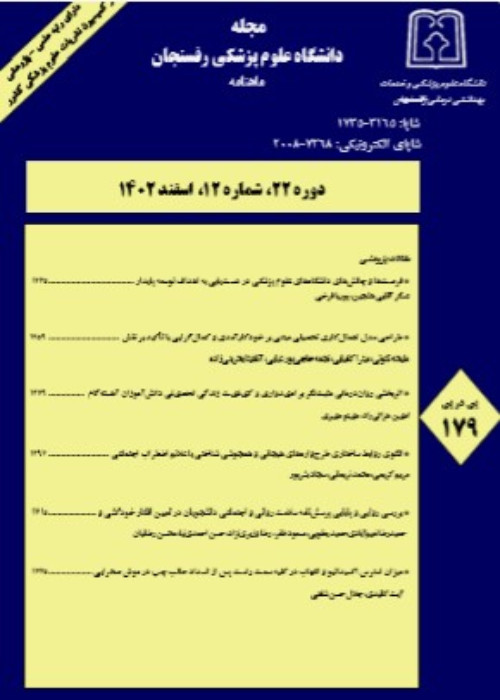The Biosynthesis of Silver Nanoparticles Using Plants of Glycyrrhiza glabra and Mentha Piperata and Its Antimicrobial Effect on Some Bacterias That Cause Tooth Decay
Author(s):
Article Type:
Research/Original Article (دارای رتبه معتبر)
Abstract:
Background And Objectives
Considering the alarming spread of resistance to classic antimicrobial agents, innovative therapeutic approaches to combat antibiotic-resistant pathogens, like the compounds derived from plants and nanoparticles, seems necessary. This study was conducted to investigate the antibacterial effect of biosynthetic silver nanoparticles using Glycyrrhiza glabra and Mentha piperata plants on some tooth decay bacteria.Materials And Methods
This descriptive study was carried out in the Chemistry and Microbiology Laboratories of the Basic Sciences Faculty of Neishabour Islamic Azad University, in 2016. Silver nanoparticles were produced in biological method using aqueous extracts of Glycyrrhiza glabra and Mentha piperata. Nanoparticles were studied by using spectrometry techniques and Scanning Electron Microscopy (SEM). To predict the antibacterial effect of nanoparticles, from each of the extracts at 3.12, 6.25, 12.5, 25, 50, 100, and 200 μg/ml concentrations, 100 μL was used for broth micro dilution test . Comparison of the mean results of two types of nanoparticles was done using One-way ANOVA statistical test.Results
UV-Vis spectroscopy analysis and the peak at 430 nm indicated the biosynthesis of the nanoparticles in the extract, and the photo of SEM determined the shape of the nanoparticles spherical and the average size was set at about 55 nm. In reviewing the antimicrobial effect of biosynthesis of silver nanoparticles, the nanoparticles had a good antibacterial activity against the bacteria under study. MIC (Minimum Inhibitory Concentration) values for biosynthetic nanoparticles with Glycyrrhiza glabra extract against Streptococcus mutans, Actinomyces viscosus ,and Lactobacillus rhamnosus were 1.6, 6.25 ,and 50 μg / ml (p≤0.05), and MIC for biosynthetic nanoparticles with Mentha piperata extract against these bacteria were determined to be 12.5, 12.5 ,and 200 μg / ml, respectively (p≤0.05)Conclusion
Due to their antioxidant properties and many secondary compounds, the plants extracts play the role of regeneration and stabilization of nanoparticles. In this study, silver nanoparticles were synthesized well with the aqueous extracts of Glycyrrhiza glabra and Mentha piperata plants, and the synthesized nanoparticles showed a good antibacterial activity against the bacteria that contributed to the decay of the tooth.Keywords:
Language:
Persian
Published:
Journal of Rafsanjan University Of Medical Sciences, Volume:16 Issue: 10, 2018
Pages:
953 to 968
magiran.com/p1797138
دانلود و مطالعه متن این مقاله با یکی از روشهای زیر امکان پذیر است:
اشتراک شخصی
با عضویت و پرداخت آنلاین حق اشتراک یکساله به مبلغ 1,390,000ريال میتوانید 70 عنوان مطلب دانلود کنید!
اشتراک سازمانی
به کتابخانه دانشگاه یا محل کار خود پیشنهاد کنید تا اشتراک سازمانی این پایگاه را برای دسترسی نامحدود همه کاربران به متن مطالب تهیه نمایند!
توجه!
- حق عضویت دریافتی صرف حمایت از نشریات عضو و نگهداری، تکمیل و توسعه مگیران میشود.
- پرداخت حق اشتراک و دانلود مقالات اجازه بازنشر آن در سایر رسانههای چاپی و دیجیتال را به کاربر نمیدهد.
In order to view content subscription is required
Personal subscription
Subscribe magiran.com for 70 € euros via PayPal and download 70 articles during a year.
Organization subscription
Please contact us to subscribe your university or library for unlimited access!


